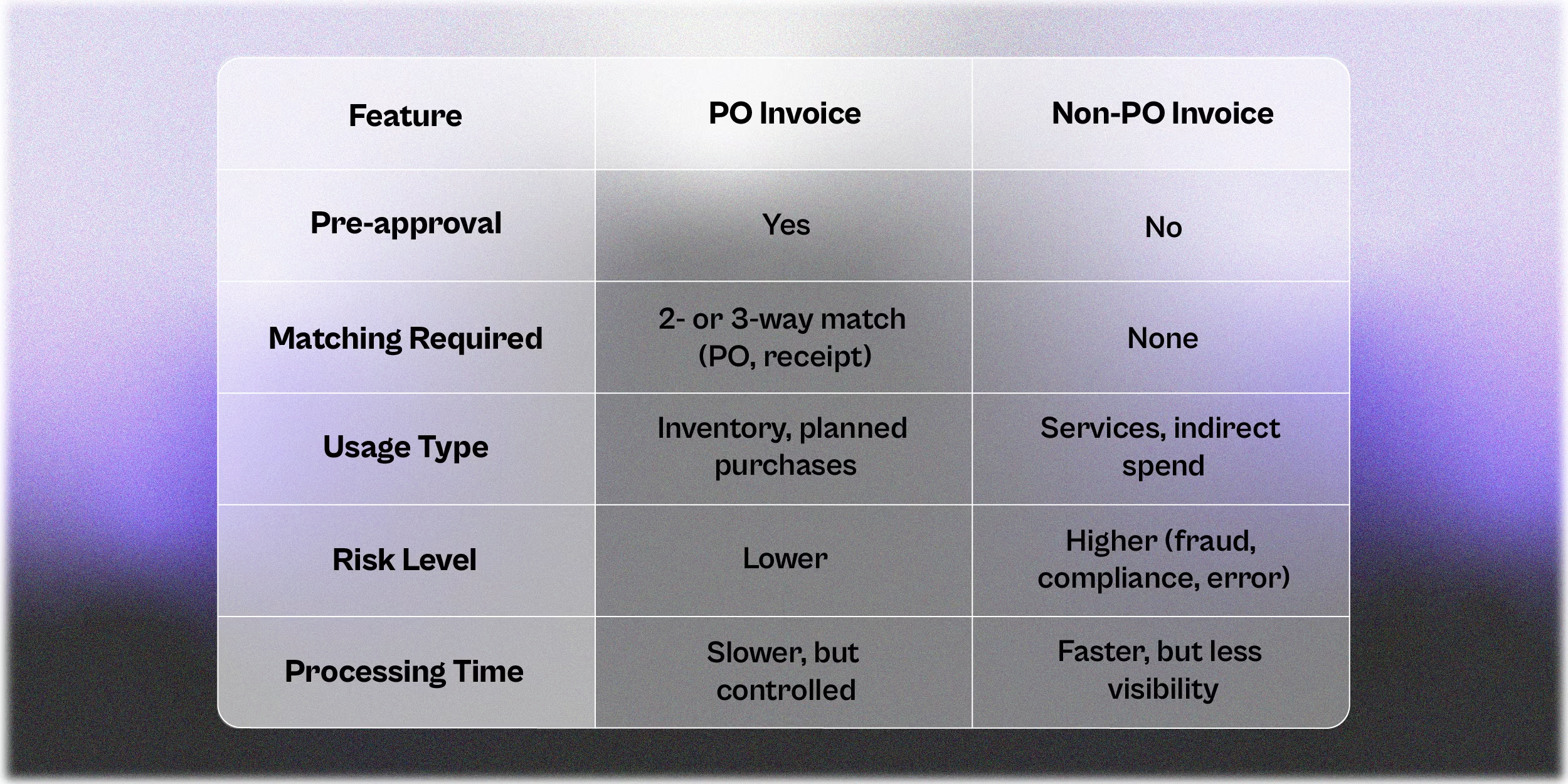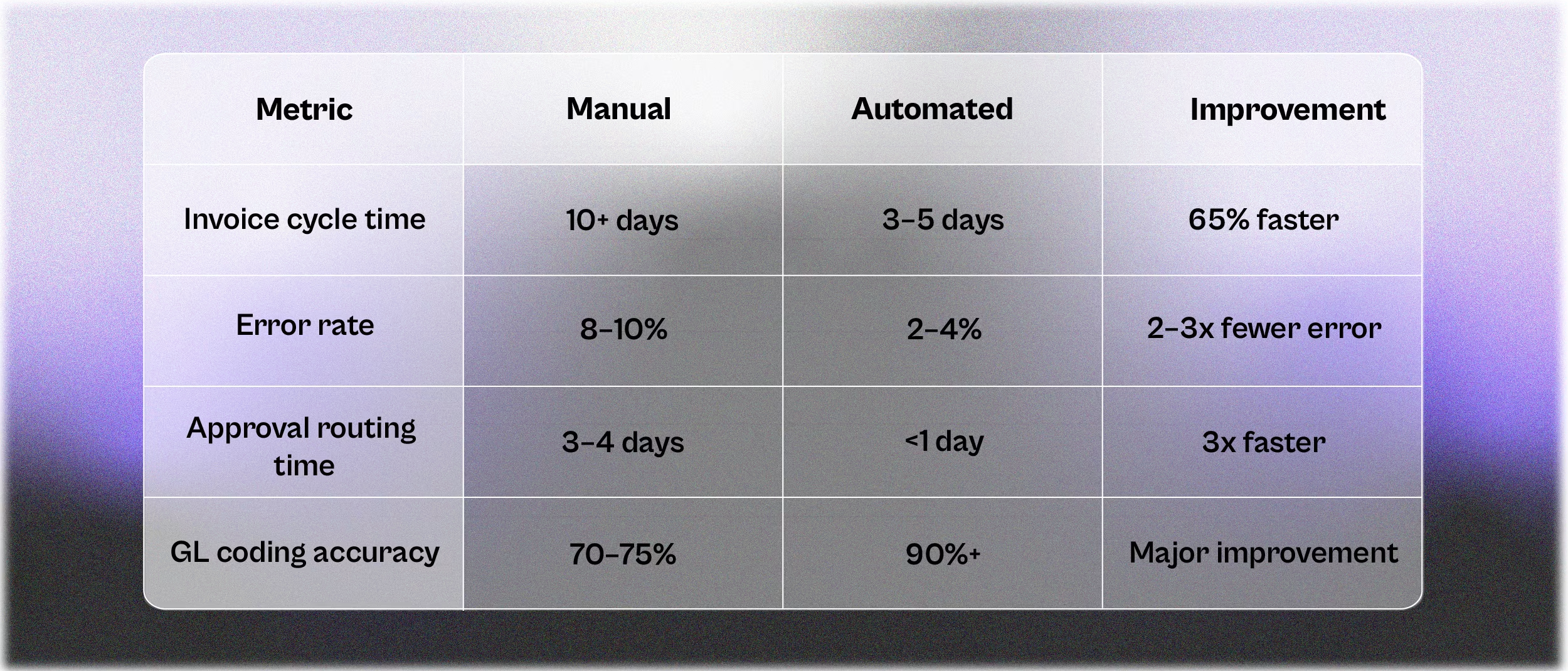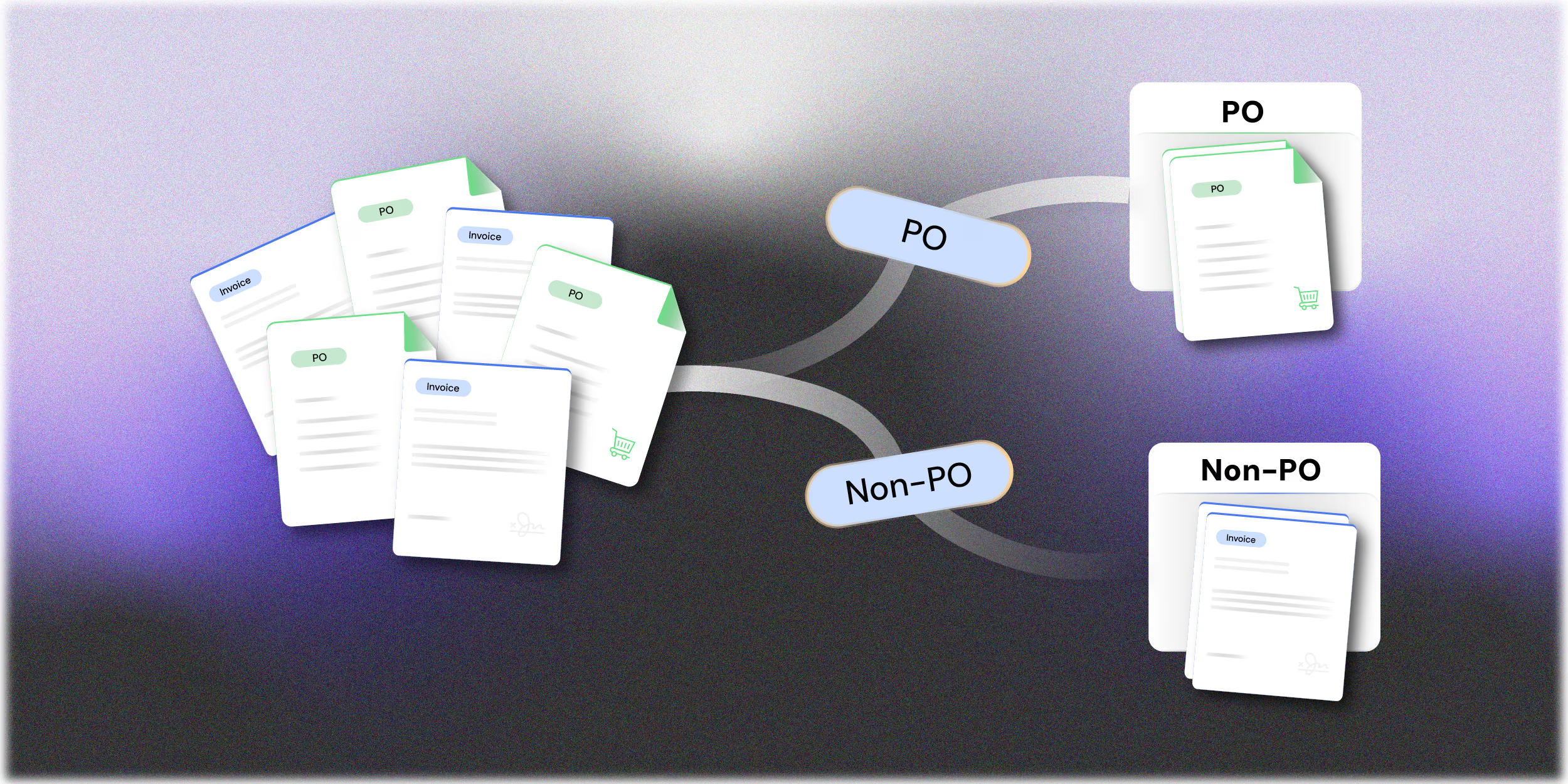What Are Non-PO Invoices?
Non-PO (non–purchase order) invoices are supplier invoices submitted without a corresponding purchase order (PO). They’re most commonly used for:
- Services like legal or consulting work
- Utility bills and subscriptions
- Emergency or ad hoc purchases
Unlike PO-based invoices, which are matched against a pre-approved order and receipt, non-PO invoices typically bypass procurement. That makes them faster but also riskier.
How Are They Different From PO Invoices?

Why Non-PO Invoices Happen (and Why You Should Care)
Non-PO invoices are common in mid-market and enterprise finance operations. According to Ardent Partners’ 2024 report, non-PO invoices account for 20–35% of total invoice volume in many AP departments.
- Decentralized buying (departments purchasing directly)
- Lack of clear procurement policies
- Subscription-based services with auto-renewals
- Vendor relationships without formal contracts
These invoices can’t be matched automatically meaning AP teams must validate them manually. This creates friction, delays, and audit risk.
Key Risks of Manual Non-PO Invoice Handling
- Fraud exposure: Without a PO, invoice legitimacy is harder to verify
- Compliance issues: Bypasses procurement controls
- Overpayments: Duplicate or inflated charges may go unnoticed
- Audit flags: No clear approval trail
How Automation Helps
Modern AP tools now support:
- Auto-coding: Predicts GL accounts based on invoice content
- Smart routing: Auto-assigns approvers by business rules
- Exception handling: Flags anomalies for manual review
- Audit trails: Tracks approvals and comments
This reduces cycle times by 60% and errors by 70% (Ardent Partners, 2024).
Real Numbers: Manual vs Automated Non-PO Workflow

Non-PO invoices will always exist but manual handling doesn’t have to. By automating classification, routing, and coding, finance teams regain control, ensure compliance, and free time for higher-value work.
Book a demo and discover how we simplify non-PO invoice management across entities and currencies.







